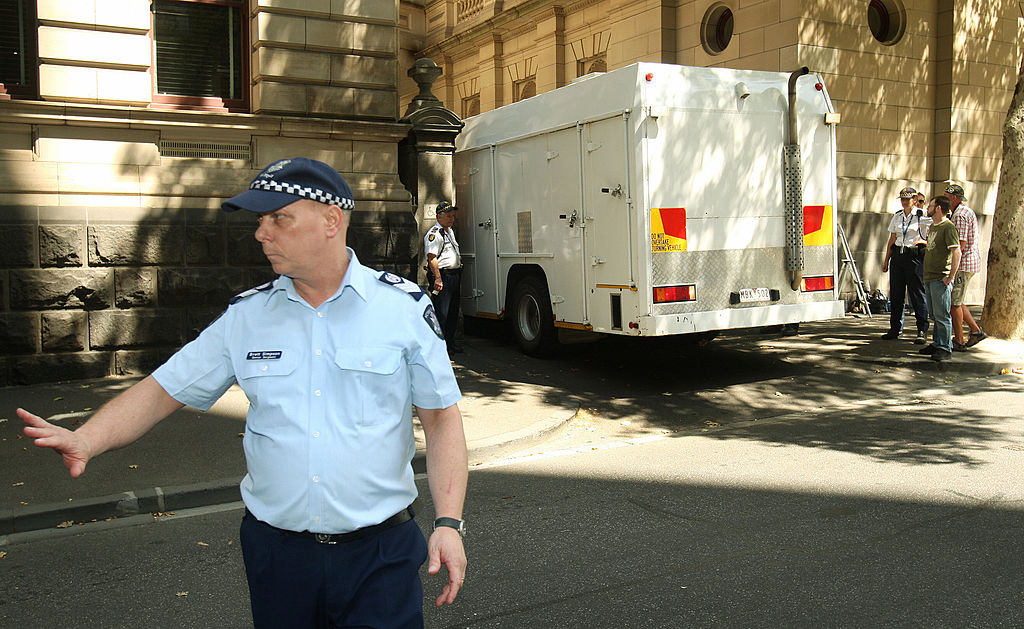
The fact that convicted terrorist Abdul Nacer Benbrika is being released from jail should be of concern to all Australians. Alarmingly, it’s happening without the court system even being asked to consider a continuing detention order.
Just three years ago, the home affairs minister asked the Victorian Supreme Court for a continuing detention order, a vital last-resort measure that enables a convicted terrorist to be kept behind bars after they’ve finished their sentence, on the basis that they continue to pose ‘an unacceptable risk’ of committing further terrorist crimes.
The court agreed, deciding Benbrika posed an unacceptable risk. So what has changed in three years?
Is it possible that Benbrika has reformed such that any risk he poses is now acceptable? That seems highly unlikely, but if a new assessment has found that the risk has fallen, the government would at the very least need to explain that shift to ensure public confidence.
So what else has changed?
First, the governance arrangements, with the decision to seek a CDO shifting from the Home Affairs portfolio to the Attorney-General’s portfolio.
Second, the strategic and security environment. A few years ago, we were at the height of the Islamic State threat and there was enormous awareness of the risks of terrorism. The terror threat level in Australia was high, with terrorists planning attacks in and against Australia.
By 2022, the terror threat level was reduced from probable to possible. IS was degraded with its control over land in Syria and Iraq removed and capabilities severely reduced. The risk since last year, however, has been an increasing perception that the terror threat was not just temporarily reduced but had faded completely—even though the head of the Australian Security Intelligence Organisation, Mike Burgess, was at pains to say that wasn’t the case.
And we have made this mistake before.
The January 2013 national security statement effectively said the era of terrorism was behind us. Yet, within the year, IS had risen.
The terror threat level was raised and we reached the alarming realisation that the security law framework wasn’t adequate for this new era.
The control-order regime—allowing authorities to put special monitoring arrangements on people of concern—was updated multiple times and new laws were introduced, including the continuing detention regime.
Of course, CDOs are a measure of last resort. The basic principle of justice is that criminals who complete their sentences are released, having received their punishment and, hopefully, a chance at rehabilitation.
But the evidence shows that some offenders remain simply too much of an ongoing security threat. Benbrika was one of these.
He had a proven ability as a leader who could inspire others and coordinate a terrorism plot, including a plan to detonate a bomb at the Melbourne Cricket Ground during the 2005 AFL Grand Final. His failure to reform in prison, and his ongoing proselytisation of violent jihadism, meant he continued to pose a danger.
In the past couple of years, we have moved into an era in which other threats have risen and surpassed terrorism. Foreign interference and espionage were declared in 2021 to be Australia’s top security threats.
But Burgess has always been clear this doesn’t mean terrorism has disappeared. Yet we’re now at risk of repeating our mistakes. Because IS and al-Qaeda are no longer on the front pages, we’re in danger of complacency about violent extremism.
We saw this play out in March 2023 when the then Independent National Security Legislation Monitor, Grant Donaldson—arguably stepping beyond his remit—said that CDOs were not necessary to counter the threat of terrorism and recommended they be abolished.
In doing so, the watchdog was choosing a point in time and misunderstanding the nature of the terrorism threat, which ebbs and flows. The government is yet to make any response to the recommendation.
In fact, in recent weeks the parliament has introduced a new preventative detention regime based on the terror laws to deal with the fallout of the High Court ruling that meant more than 150 non-citizens were released from immigration detention, some despite having criminal convictions.
This shows the folly of the original recommendation and shows it’s unlikely the government will abolish CDOs altogether—all the more reason why someone as serious as Benbrika shouldn’t be released without a court even being given a chance to consider continuing detention.
In another significant development, the Hamas–Israel war has inflamed hatreds for which a firebrand like Benbrika could prove a combustible new accelerant.
Overall, Australia is proving to be a resilient nation, to the credit of our multicultural society. But there are extremists looking to incite hatred and violence.
Remember, just three years ago, a court found Benbrika to pose an unacceptable risk to society.
And yet the Commonwealth isn’t even asking the court to hold him further. What risk is there in asking the court the question it affirmed in 2020?
Surely less than the risk of releasing Australia’s most notorious terrorist into the community.
CDOs are a constitutionally valid measure that we’ve just seen used as the model for the immigration detainees. And yet we are choosing not to use it now.
If we don’t use it for someone like Benbrika, when would we use it?

